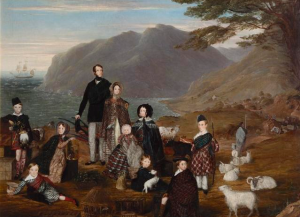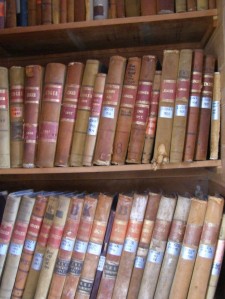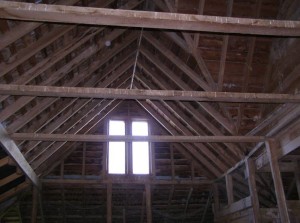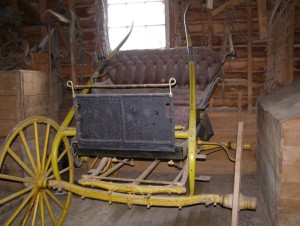This painting is in the collection of Te Papa Tongarewa National Museum of New Zealand; it is called ‘The Emigrants’ and is by artist William Allsworth, painted in 1844. William Allsworth was my great-great-grandfather, born in 1811 in Chatham, Kent and he died on 10 January 1864 in Kent.[1]
But before I say more about him, let’s see what the painting is about.
The Te Papa website gives a good explanation:
“This work by the English artist William Allsworth became known as the definitive depiction of nineteenth-century Scottish emigration to New Zealand thanks largely to its publication as a lithograph by Day Haghe in London around 1855. It shows a prosperous Scottish family in a Highland landscape, surrounded by their worldly goods — piles of luggage, animals, cases of trees and plants, and farm implements. Clearly, they are emigrating, with everything needed for successful colonial life.
Their destination is signalled by the ship anchored just offshore. Close inspection reveals that it is flying the 1835 New Zealand flag. The family’s Scottishness is loudly proclaimed by the wearing of tartan: they are the Mackays, gathered near their ancestral home in Sutherlandshire, and it is their chartered ship, the Slains Castle, that rides at anchor in the background.
But not everything in the painting is as it seems. A family named Mackay did arrive at Nelson on the Slains Castle in January 1845, but recent research by descendants has revealed that their real name was Mackie, and that their father, James, was not the brother of a Sutherlandshire laird he claimed to be, but the second son of a merchant in Aberdeen. Furthermore, he had spent most of his life in London, where he worked as a banker. He married an English woman and the children were all London born. And the Slains Castle was not chartered by the family — nor did it sail from Scotland. It was a New Zealand Company ship that sailed from Plymouth in October 1844 with several other passengers besides the ‘Mackays’.
It is possible that James Mackie embellished his family history because emigration to such a distant destination as New Zealand gave him the opportunity to make a new start with a fabricated noble identity. Commissioning Allsworth to construct an appropriate image — he had exhibited ten paintings at the Royal Academy, London, between 1836 and 1856, all but one of which appear to have been portraits — might have been a key step in establishing the family’s new legend.” [Written by Michael Fitzgerald, This essay originally appeared in Art at Te Papa (Te Papa Press, 2009).]
More recently (2021) a new paragraph has been substituted for the last paragraph:
Mackay commissioned the artist, William Allsworth to produce this family portrait in 1844. To make the painting, Allsworth probably made individual portrait sketches of each family member in London, then united them all against a suitable Highland landscape. It has previously been speculated that James Mackay took advantage of the potential of painting to embellish his family history, and that emigration to such a distant destination as New Zealand gave him the opportunity to make a new start with a noble, and fashionably, Scottish identity. However, it is equally possible that Mackay wanted to provide a visual record of his Scottish ancestry for his family, to represent their origins in the Scottish Highlands, particularly as they were about to embark on a journey to the other side of the earth, from which they may never return.
The painting has been on permanent display in Te Papa’s exhibition about emigrants to New Zealand, unlike most of the art on the floor above, which is changed from time to time. [Since I wrote this, it has been moved to the fifth floor on the portrait wall.]
It (or, more likely, the lithograph of it) has been reproduced on the cover of two books that I know of:
As mentioned above, William Allsworth exhibited 10 paintings at the Royal Academy (London) between 1836 and 1856, although he wasn’t an academy member. The titles (and the address of the artist at the time) are given in Algernon Graves’s ‘A Complete Dictionary of Contributors and their work from its foundation in 1769 to 1904’ (online) One of his exhibits was called “An Artist” – exhibited in 1836 and 1838 – perhaps this is his self-portrait, and in 1850 he exhibited “Portrait of a Lady” – perhaps his portrait of his wife Georgiana (see below). He also exhibited two at the British Institute in 1854 and 1856.
The figures in ‘The Emigrants’ look rather stiff and you might say he had quite a ‘naïve’ style of painting from only looking at this painting. However, his self-portrait and portrait of his wife appear to be of better artistic quality – even though I haven’t seen the originals, only these photographs of them. [2023/24: Since writing this post, I have now seen the original paintings and I have inserted better photos below. Only her portrait is framed; and his is a bit damaged. I have written a later post on him as well: William Allsworth. And I have since had the paintings restored. See this later post for new photos.]
Perhaps his forte was painting portraits rather than people in a landscape as ‘The Emigrants’ required of him. Below the paintings are two photographs that I believe are of them, at older ages.




These two paintings were sent to the artist’s son in New Zealand: “The paintings were packed in England and freighted to New Zealand by Levin & Co Ltd. The packing and freight cost 100 pounds and arrived at Makora Road [Masterton, NZ] where there was considerable excitement in the family on their arrival, an event Marion [born 1890] remembered many years later”.[2]
In 2016, two Allsworth paintings sold at auction in England, called Portraits of a man and his wife (source):

Only the woman was illustrated, but interestingly the man and his wife turn up in a 2016 London exhibition by Paul Stephenson called ‘Forced Collaboration‘:

Although the caption says the original is called ‘Mr & Mrs Thomas Walker’, they had no names in the auction, and another painting in the exhibition was by an artist called Thomas Walker, so it’s possible the names have been transposed. I think these two look somewhat like the artist and his wife, as in the paintings and photos above, but at different ages.
*
I don’t know if there was any prior connection between the artist and the Mackay/Mackie family, before he painted them. But it is interesting that he painted a family about to emigrate to New Zealand and later some of his own family emigrated here. A brother of the artist, Ralph Allsworth later emigrated to New Zealand – this was probably in 1858: Mr and Mrs Allsworth and five children, plus a Miss A Allsworth arrived April 16 1858 on the Burmah from London.[3] Ralph became a Presbyterian minister. I don’t know who Miss A Allsworth was – the artist had a daughter called Emily Amelia Ann who would have been about 14 in 1858 – she may have come to help with her uncle’s children. However, I cannot find a marriage or death for this ‘Miss A’ (or E) in the NZ registers so perhaps she later left the country.
And four years later the artist’s eldest son, William Henry Allsworth, also emigrated here. This son is my great-grandfather. He was born on 4 June 1842 at 99 Park Street, Camden Town, London. He probably arrived in New Zealand on the ship Triton on 6 July 1862.[4] He married Emily May Morris on 25 June 1873 in the Wesleyan Chapel, Masterton, and died 14 January 1908 in Masterton, New Zealand. He spent a few decades working at the large sheep station in the Wairarapa called Brancepeth, and the related station of Te Parae.
It is likely William started at Brancepeth about 1863 or perhaps a bit later, as a shepherd. In 1880 he was in charge of the shearing, and with a team of 47 shearers and hands it took a month to hand shear 49,383 sheep and 14,365 lambs to produce 910 bales of wool.[5]
In 1874, William earned £80 per annum, in 1877 his salary was increased from £78 to £100 p.a. (for two years).[6] Times must have been good for the station! His obituary (he died 14 Jan 1908) describes him as ‘manager’ or ‘overseer’ in his latter period at Brancepeth, although by the 1890s his health wasn’t very good and he may have had an indoor job. The 1896 ledger does say next to his name ‘station manager’ but this is crossed out as he finished in 1896 – on 11 March the station diary records that ‘Mr Beetham promised Allsworth ₤12.10 six weeks from discharge and another ₤12.10 at the expiration of a further period of 6 weeks’, and he was paid in April and May.
It appears he became bankrupt and in 1898 ‘W H Allsworth’ was unconditionally discharged from bankruptcy – this is probably the father, but his eldest son (b. 1874) was also called William Henry.[7] However, in the 1900 Brancepeth station ledger W H Allsworth (senior), Chapel St, Masterton was paid ₤17 in total that year at various intervals (including some at docking time) and he is called ‘shearing clerk’. A note says he ‘has settled up with us on 3 Jan 1901 by 8 weeks wages at ₤2 (without bonus). By additional ₤1 because he is a loser by new ….’ [3 words I can’t read].[8]
So it would appear he was taken back on at Brancepeth, at least intermittently. However, in the years before he died in 1908 he was a book keeper at Pinhey Brothers in Masterton.[9]
All W H (father) and Emily Allsworth’s children, possibly except the last, are recorded as born at Brancepeth – from 1874 to 1890, including my grandmother Minnie in 1885. Pearl was born in 1894 in Masterton, which suggests the family weren’t living at Brancepeth by this time.
My mother’s cousin Olga Knox got permission to visit Brancepeth in 1990 to look through station records. Olga (nee Allsworth) had lived at Te Parae as a child in the 1920s. W H Allsworth’s three sons – another W H, Arthur and Edgar – all worked at Brancepeth or Te Parae at some time. Olga noted some of the references to Allsworths in the ledgers. Those referring to her grandfather (W H senior) seem mostly to relate to payment of his insurance and his ill health in the 1890s.
Olga also said: “We found out something we didn’t know and that was that Grandad had spent a lot of the years he was there living at Te Parae, where we never knew he had, we’d always been told he’d been at Brancepeth… We didn’t know he had actually lived in the Te Parae house that we had lived in!”[10]
I have made two visits to Brancepeth and managed to look at some of the ledgers. The former station clerk’s office is still crammed with records going back at least to the 1870s. Lydia Wevers of Victoria University has written a fascinating account of the former shepherds’ library at Brancepeth, called ‘Reading on the Farm: Victorian fiction and the colonial world’. It was through doing an evening class with Lydia on the library and her book that I first visited Brancepeth. More information about this historic farm can be found on the Heritage New Zealand website.
A few photos taken on my visits.
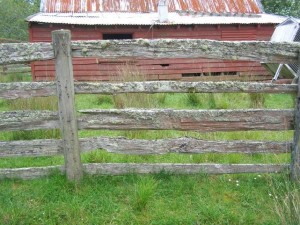
Footnotes
[1] He was baptised on 21 April 1811, his parents were Ralph and Mary. I have found him in the 1851 and 1861 UK censuses living in London. His wife Georgiana (nee Turner) is described as ‘widow of William Allsworth an artist’ on her death certificate in 1866. There are a number of death registrations for William Allsworth (Alsworth) between 1861 and 1866, none of them in the St Pancras area where he was living. He died in West Kent Hospital, Maidstone, Kent on 10 January 1864. He was aged 53 (which confirms he was born about 1811) and is listed on his death certificate as “artist (portrait painter)”. His wife presumably was not present at the death as she is not mentioned on the certificate. It seems likely he was in or near Maidstone on a painting commission at the time he suffered a brain hemorrhage.
[2] I no longer remember my source for this information.
[3] New Zealand Spectator, 17 April 1858
[4] A W Alsworth arrived on this ship. New Zealand Spectator, 9 July 1862
[5] David Yerex They came to Wydrop: The Beetham and Williams families of Brancepeth and Te Parae, Wairarapa 1856-1990 Publ GP Print on behalf of H Beetham and T Williams, 1991, p. 80
[6] Brancepeth Station ledgers
[7] Evening Post, 28 September 1898, Page 5
[8] Station ledger, 1900 – seen on visit to Brancepeth 27 October 2012
[9] Advertisements, Wairarapa Daily Times, 26 March 1907, Page 1; also his obituary.
[10] Excerpt from letter Olga Knox to Vivienne Morrell, 12 Nov 1990

